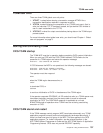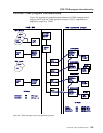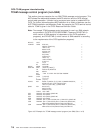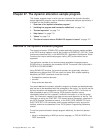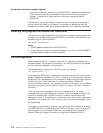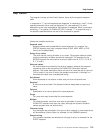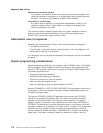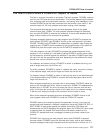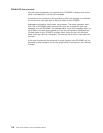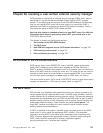
v Have read the relevant sections of the
MVS/ESA SPL: Application Development
Guide
and have that manual available for reference while using the sample
program, in particular for looking up error and reason codes returned by
DYNALLOC.
The application uses a 3270 display screen terminal, and adjusts its formatting to
suit the screen size. BMS is not required. The program is designed so that the
installation can easily modify the functions supported to suit installation standards.
Installing the program and transaction definitions
Transaction and program definitions for the dynamic allocation sample program are
provided in the sample utilities group DFH$UTIL on the CSD. These definitions are
installed using the CEDA command:
CEDA INSTALL GROUP(DFH$UTIL)
Notes:
1. DFH99 must be defined with EXECKEY(CICS).
2. If you make any changes to the sample program, you must run the DFH99BLD
procedure before using the ADYN transaction.
Terminal operation
When transaction ADYN is entered at a terminal, the operator is presented with a
formatted display. The top part of the display is for entering commands, the bottom
part for receiving messages from the program.
The operator types a command in TSO-like syntax, for example,
verb {keyword[(value...)]}...
and presses the ENTER key. The program checks the command for correct syntax,
builds a DYNALLOC parameter list, and, if no serious errors are detected, issues a
DYNALLOC SVC. Messages are then displayed to diagnose syntax errors, give the
DYNALLOC return codes, and show any values returned by DYNALLOC
information retrieval features. The command remains on the display, and the editing
features of the terminal can be used to correct it for reentry, or to enter a different
command.
If there are too many messages to fit into the message area of the screen,
messages that cannot be displayed are queued, and the messages already on the
screen are displayed with a brighter intensity to indicate that there are more
messages to come. The operator can correct those errors that are being displayed,
and reenter the command for further checking, when the queued messages, if any,
are regenerated.
The program is terminated by entering a null command, which consists of pressing
the ERASE INPUT key, followed by the ENTER key. PA keys 1 and 2 are ignored
by the program. If you press the CLEAR key, you redisplay the last command
entered. Pressing a program function key is equivalent to pressing ENTER.
the dynamic allocation sample program
714
CICS TS for OS/390: CICS Customization Guide




